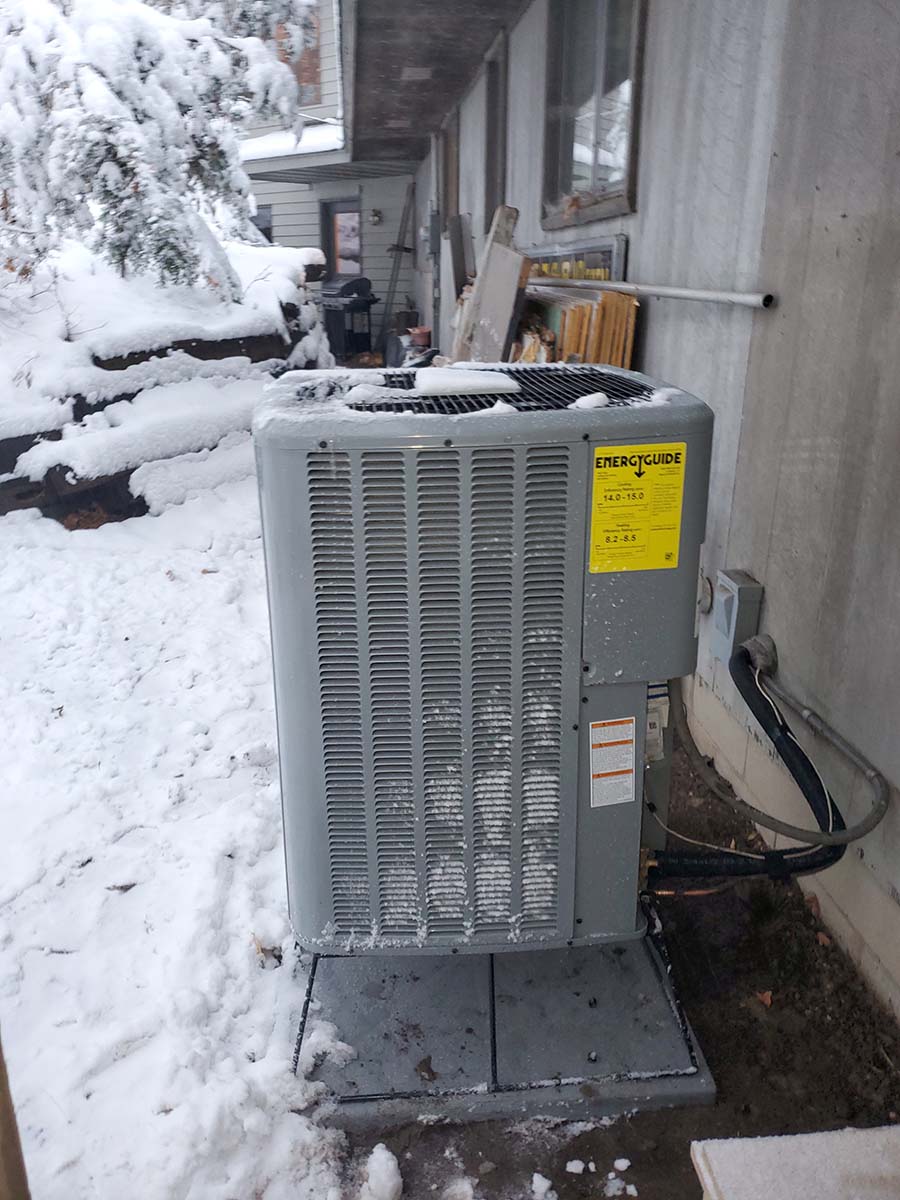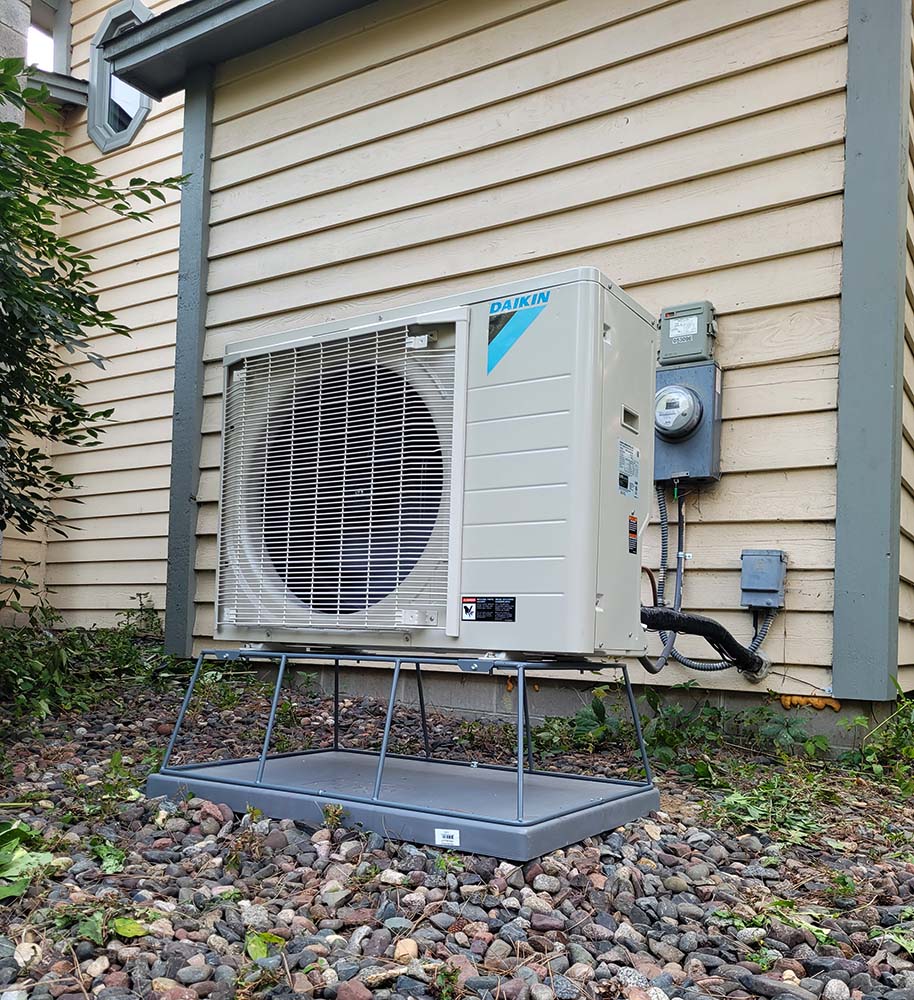HVAC contractors are responsible for providing indoor comfort. Their livelihoods depend on it. Contractors are challenged to provide the proper HVAC equipment and ensure it delivers total indoor comfort, incorporating the right mix of humidity, air quality, and temperature.
As America embraces the push toward electrification, more and more homeowners are opting to replace their fossil fuel furnaces and air conditioners with ducted and ductless heat pumps.
Through this swap, HVAC contractors must thoroughly understand the pros and cons of these systems and be willing and able to clearly explain to customers why they should consider implementing one at their residences.
While efficient, heat pumps are very much climate-dependent, and their performance varies by geographical area. One important variable is moisture control, especially in excessively dry/wet and hot/cold regions. Contractors must be prepared to handle humidification and dehumidification concerns before, during, and after installation — and every home has different requirements.
director of decarbonization, McNevin Co.
Ensuring the Proper Fit
Heat pumps utilize evaporator coils and condenser coils. Because of this, they operate much like refrigerators or air conditioners, where air from inside a home is forced past a coil that contains low-pressure refrigerant. Moisture from the air collects on the coils as it's cooled by the refrigerant and is collected in a condensation drain pan. The collected moisture, called condensate, is then typically drained from the pan by gravity or a pump.

BRING THE HEAT: Heat pumps utilize condensing coils. Because of this, they operate much like refrigerators or air conditioners, where air from inside a home is forced beyond a coil that contains pressurized refrigerant. (Courtesy of Legacy Service Partners)
The process of a heat pump operating in cooling mode is essentially the same as that of an air conditioner. As long as a heat pump is properly sized, it can provide similar amounts of dehumidification as an air conditioner while also offering efficient heating in the winter from the same equipment.
Latent energy is the energy absorbed by a system, causing a change in phase, without a change in temperature. Sensible energy is the energy in the system that alters the temperature without a change in phase. When it comes to conditioning a home’s sensible and latent heat loads, sizing a heat pump correctly is the most effective step an HVAC contractor can take.
“Without properly sizing the system for the conditions on-site, the amount of latent heat being removed by the system is often insufficient, leading to a hot, sticky home or, potentially, a sick home,” said Ryan Green, director of decarbonization, McNevin Co., a Denver-based HVAC manufacturers’ rep. “If the HVAC system isn't sized, installed, and commissioned properly, the latent energy released during the condensing process won't be sufficient, which can lead to a muggy, uncomfortable home.”
“Some contractors try to oversize the heat pump to gain heating performance, which leads to oversized evaporator coils and shortened cooling run time — ultimately lowering the humidity removal,” said Corey Hickman, owner, Comfort Matters Heating, Cooling & Plumbing, in Maple Grove, Minnesota. “It’s most important to ensure the current duct system is large enough to handle the required airflow. While fan speed and coil size are important, generally, using systems with invertor compressors will provide the best humidity removal in the summer.”
An oversized heat pump is typically more noticeable in high humidity climates, though each season affects the system differently.
“An air conditioner needs to run a minimum of 15-20 minutes before the latent capacity of the system starts to remove humidity from the air,” Hickman said. “In the winter, we see the opposite effect. Many contractors install bypass humidifiers, and the heat pump’s cooler supply air reduces the capacity of the humidifier. Using a steam humidifier will produce much greater results and less water waste.”
When it comes to appropriately sizing a system, different contractors rely on different methods.
“I highly recommend contractors perform an ACCA load calculation to determine the size of the new system,” said Jeff Reed, vice president, retail operations, Custom Air Conditioning and Heating Co., Columbus, Ohio. “Inverter technology reduces our concern when it comes to oversizing the a/c side, as we’re more focused on hitting the heating load in Ohio.”
When in doubt, aim for longer run times, said Nick Bender, sales and business development manager, Minneapolis St. Paul (MSP) Plumbing, Heating, Air in Minneapolis.
“Many systems are oversized, which can really limit their ability to dehumidify,” he said. “With split, ducted systems, refrigerant coil selection is very important, as the coil surface area and runtime affect its dehumidifying ability.”
Signs of improper moisture management include the smell of mildew, a moldy evaporator, sludge in the condensate pump line, and condensate on windows/walls. Contractors should be fluent in psychrometrics and building science and be able to easily explain terms like dew point, relative humidity, stack effect, etc., simplifying the conversation for customers.
“Contractors must apply these basic concepts to understand the source of a moisture problem,” said Jon Harrod, HVAC project manager for Halco Energy in Phelps, New York. “Many questions arise: Is the moisture issue due to massive moisture loads from a wet basement or dirt-floor crawl space, lousy dehumidification from an oversized HVAC system, condensation on poorly-insulated surfaces, or a lack of ventilation that allows moisture from daily activities to build up? Contractors are tasked with answering these questions.”
Performing Proper Maintenance
When providing service or maintenance on a residential heat pump, contractors should always check the fan speed, evaporator coil, air leakage, and more.
“If humidity isn’t being removed in the summer, check that the fan speed isn’t set too high,” Hickman said. “Typically, you will want it around 350-400 cfm per ton. You’ll also want to ensure the evaporator coil is clean. Systems, on average, are designed for 70% sensible heat removal and 30% latent heat removal, and an oversized heat pump will not reach the 15-20 minute run time needed to begin latent heat removal. Additionally, if the duct system is in the attic, air leakage will cause humid air to be pulled into the duct system.”
Hickman also does not encourage homeowners in high humidity climates to turn the blower fan to the “on” position.
“Running a constant fan will cause water on the coil and drain pan to re-evaporate back into the home after the compressor shuts off,” he said.
In addition to heat loss calculations, contractors should consider running a blower door test to gain a better understanding of how much air and moisture is being exchanged and/or introduced into the home.
“We ran a blower door test on one home and discovered that one of the homeowners drove her car through the drywall, creating a gaping hole,” said Reed. “The homeowner simply covered up the hole with a piece of plywood, which didn’t stop the leak. A blower door will tell us a lot about how loose the home really is and where the leaks are.”
Ductwork distribution to areas that require excess moisture control, such as basements, is also an important consideration.
“In heavy moisture applications, separate dehumidifiers can be installed and piped into existing ductwork systems or have their own ductwork systems,” said Bender. “There’s plenty of good products to address moisture and humidity; it’s just a matter of good product and control selection and integration.”
Dry Mode
Dry mode on a ductless heat pump is an operational feature designed to slow the airflow of the heat pump so that the volume of air moves slower across the evaporator, giving the coil more time to wring moisture out of the air. With less moisture in the air, occupants generally feel cooler and more comfortable.
“When the heat pump operates in heating mode, it does not need to dehumidify,” said Reed. “This is because the warm air that is circulated around the home gently removes any moisture in the room. During the colder months, dry mode can be used once a room has been heated.”
While dry mode is effective in certain uses, Green said it’s important to remember that relative humidity is relative to the indoor temperature.

HVACR contractors must be aware and willing to provide the appropriate solutions when installing, maintaining, and servicing heat pumps throughout all climates. (Courtesy of Legacy Service Partners)
“Dry mode can cause the sensible temperature to drop alongside the dew point, effectively reducing the amount of moisture in the air but not affecting the relative humidity percentage, leading to an over-cooled space,” he said. “From my experience with commercial pool rooms and grow houses, a better dehumidification strategy for residential applications would seem to be hot gas reheat for leakier homes. For newer homes — those with less air turnover and tighter construction — I would recommend either a heat recovery ventilator [HRV] or a dedicated outside air processing unit with a cooling coil designed to reduce the air down below dew point and a reheat coil designed to bring the air back to a constant discharge of neutral 72°F, 55% RH air.”
To ensure homes are efficient, durable, and healthy to live in, proper moisture management is critical. HVACR contractors must be aware and willing to provide the appropriate solutions when installing, maintaining, and servicing heat pumps throughout all climates.
“A traditional air conditioner or heat pump only dehumidifies when the thermostat tells it to,” said Harrod. “To provide comfort, contractors must not only reduce the temperature of the air; they must remove some of the humidity from the air as well.”



Report Abusive Comment